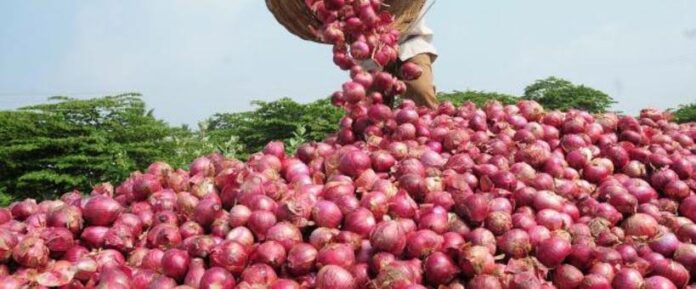Five years ago, Ms Mary Githinji, began to brace herself for a life of poverty after her husband, the family’s breadwinner, died.
“He had left me with children and plenty of debts. The only asset we had to show for our union was five acres we had jointly purchased over four decades ago,” she says.
Ms Githinji was sad about her husband’s death, but she also resented his not having started a savings plan or invested the little they got from their farm.
“With time, however, I got over it and decided to start over as a diligent farmer by taking a loan from a local sacco and seeking help from my children,” she says.
She had heard about a hybrid onion farming initiative that was being introduced in Karatina and Kieni West by a group of development organisations and seed firms and decided to give it a try.
“I planted varieties like Tropicana, Red Passion and Red Pinoy that mature in four months after transplanting from a nursery. My children and grandchildren provided a lot of the labour, and I spent less than Sh60,000 on planting, weeding and other similar activities,” Githinji says.
The first harvest was beyond her wildest expectations, with the five acres producing 30 tonnes of onions.
“Together with fellow villagers, we were linked to middlemen in Nairobi who bought the onions at Sh50 per kilogramme. By the end of the harvest, I had made about Sh1.5 million,” she says.
Onions are among the most consumed vegetables in the country and offer higher profit margins than most other horticultural crops. They also have a longer shelf life (up to three months) than crops like tomatoes and potatoes.
And the best part is that the onion market in Kenya is far from saturated. In fact, a past Food and Agricultural Organisation report found that 50 per cent of the onions consumed in Kenya are imported from Tanzania.
Nickson Mburugu, an onion farmer and founder of Onion Traders Panel, has compiled a guidebook for farmers interested in cultivating the crop.
“I carried out intensive research, talked to experienced farmers and experts, and after getting what I thought was sufficient crucial information, I drafted the guidebook.” He sells the soft copy online at Sh2,400.
According to Mr Mburugu, onions thrive well in warm to hot climates of 15-30°C, with optimum temperatures for plant development ranging between 13°C and 24°C. This makes a large portion of Kenya a viable environment.
There are several high-performance hybrid onion varieties sold by companies like Monsato and Simlaw Seeds. The crop requires light, well-drained soils with a pH of 6-7, and high fertility.
A substantial amount of water is necessary at the bulb stage, but excess moisture must be avoided during the growing phase.
Bulb onions can be grown from seeds, sets or transplants, but they are most commonly propagated using seeds that are first sown in a nursery to allow for an assortment of strong healthy seedlings for transplanting.
A farmer is advised to use about three kilogrammes of seeds per hectare (2.5 acres). According to horticulturists at Jumbo Agrovets, a kilogramme of Red Creole onion seeds retails at Sh6,290, while half a kilo retails at about Sh3,400.
Land should be ploughed or ripped as deep as possible, and a good seed bed prepared, with all lumps broken up with a disc and smoothened with a roller. A farmer can choose to irrigate light sandy soils using overhead or drip irrigation.
“Stop irrigating the plants when about 30 per cent of the top collapses, or two weeks before harvest,” Mburugu says.
Top dressing also helps reduce weeds and maintain the soil’s moisture level. “You may do away with fertiliser if you use quality compost in the soil before planting the onions.”
Weeding should be done once the onions start to grow so that they do not compete for soil nutrients. But do it carefully so that you do not harm or disturb the plant’s roots.
Once the plant starts to yellow, then it is time to harvest. The ripening process can be induced by breaking off the tops of the onions. It is best to harvest the onions before they produce flower stalks, but harvest green onions as soon as they get to five inches.
But remember that the taller the crop gets, the more flavourful the onion.Most hybrid varieties can be harvested three times a year. But beware the risks in the venture.
Mr Charles Kitonyo and his wife recently started onion farming on four acres in Namanga. They used Sh600,000 on labour, pest control and seeds. The crop started off well, until cutworms invaded his plantation.
How you can earn Sh. 800,000 from one acre of onions in 4 months
“Our failure to contact agricultural experts to give us insights on disease control really cost us,” Mr Kitonyo says. Onions are notoriously susceptible to disease if a farmer is not careful with the crop.
The Kitonyos expect to harvest just slightly more than seven tonnes of onions per acre — rather than the anticipated 17 tonnes — which will give them at least Sh250,000.
Other common diseases that attack onions include leaf blight, purple blotch and pink root. Look out for diseased bulbs and uproot them as soon as possible along with a few inches of the surrounding soil.








